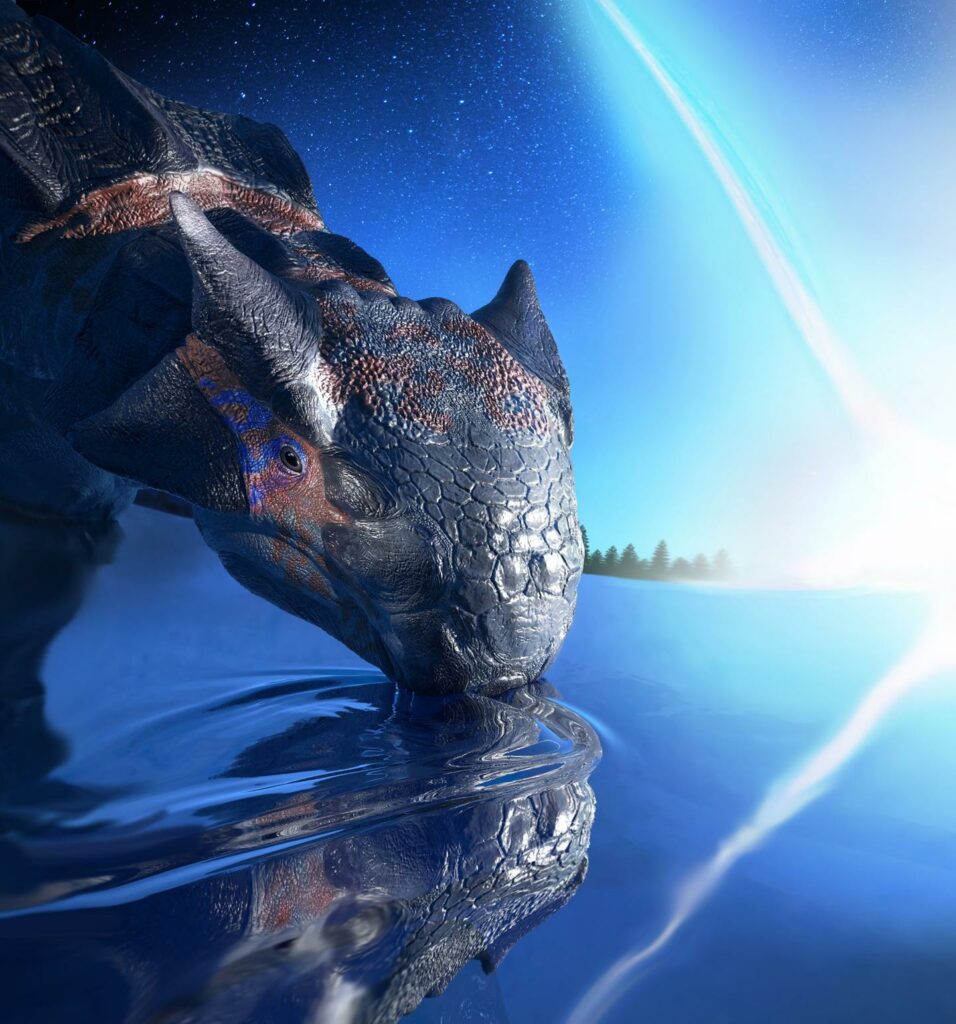Asteroid Impact, not Volcanoes, Doomed the Dinosaurs
Besides a huge asteroid impact, dinosaurs also had to deal with global volcanic eruptions -- but the latter may have actually helped life recover.

Around 66 million years ago, a giant asteroid struck our planet off the coast of Mexico. The devastating impact, whose force was equivalent to 10 billion Hiroshima A-bombs, unleashed huge tsunamis hundreds of feet tall, global wildfires, and sent molten rock hurtling all the way to the moon. About 75% of all life on Earth was killed almost instantly, including all non-avian dinosaurs.
However, not everyone is convinced by this explanation, despite the obvious tell-tale signs, such as the 180-kilometer-wide Chicxulub crater in Mexico. Some researchers have proposed an alternate scenario for the great extinction event at the end of the Cretaceous, claiming that tens of thousands of years of large volcanic eruptions may have been the actual cause of the dinosaurs’ untimely extinction.
This idea is not entirely implausible, but a new study seems to have dispelled it for good. Writing in the Proceedings of the National Academy of Sciences, researchers at Imperial College London, the University of Bristol, and University College London claim that only a large asteroid impact could have created the doomsday conditions that wiped out all dinosaurs across the globe.
“We show that the asteroid caused an impact winter for decades, and that these environmental effects decimated suitable environments for dinosaurs. In contrast, the effects of the intense volcanic eruptions were not strong enough to substantially disrupt global ecosystems,” Dr. Alessandro Chiarenza, lead-author of the new study and a recent Ph.D. graduate at the Department of Earth Science and Engineering at Imperial, said in a statement.
“Our study confirms, for the first time quantitatively, that the only plausible explanation for the extinction is the impact winter that eradicated dinosaur habitats worldwide.”
Around the same time of the Chicxulub impact, volcanic activity was brewing at the Deccan Traps, in present-day India. Eventually, widespread volcanic eruptions over a period of tens of thousands of years spewed particles of dust and gas, blocking the sun’s rays and plunging the world into global cooling.
That sounds awful — but not awful enough to cause the mass extinction event, the researchers argue.
The scientists employed geological makers and mathematical models to determine which of the two events — volcanism or asteroid impact — had more climate-changing power. These results were then combined with information about which environmental factors each species of dinosaur requires in order to thrive, such as rainfall and temperature.
Ultimately, only an asteroid impact can account for the massive destruction and widespread extinction seen during the late Cretaceous.
“Instead of only using the geologic record to model the effect on climate that the asteroid or volcanism might have caused worldwide, we pushed this approach a step forward, adding an ecological dimension to the study to reveal how these climatic fluctuations severely affected ecosystems,” Dr. Alex Farnsworth, from the University of Bristol, said in a statement.
A coinciding asteroid impact and global volcanic eruptions sounds like the worst case of bad luck in history. However, the researchers add that the volcanic eruptions actually helped life recover faster after the mass extinction event.
Although volcanoes release particles that block sunlight from reaching the Earth’s surface, they also release carbon dioxide. The greenhouse gas stays in the atmosphere long after the sun-blocking aerosols dissipate, warming the planet.
In the long term, volcanic warming actually helped restore many habitats. Perhaps, it even set the stage for the rise of the mammals, which ultimately forged humankind.
“We provide new evidence to suggest that the volcanic eruptions happening around the same time might have reduced the effects on the environment caused by the impact, particularly in quickening the rise of temperatures after the impact winter. This volcanic-induced warming helped boost the survival and recovery of the animals and plants that made through the extinction, with many groups expanding in its immediate aftermath, including birds and mammals,” Chiarenza added.

Comments
Post a Comment